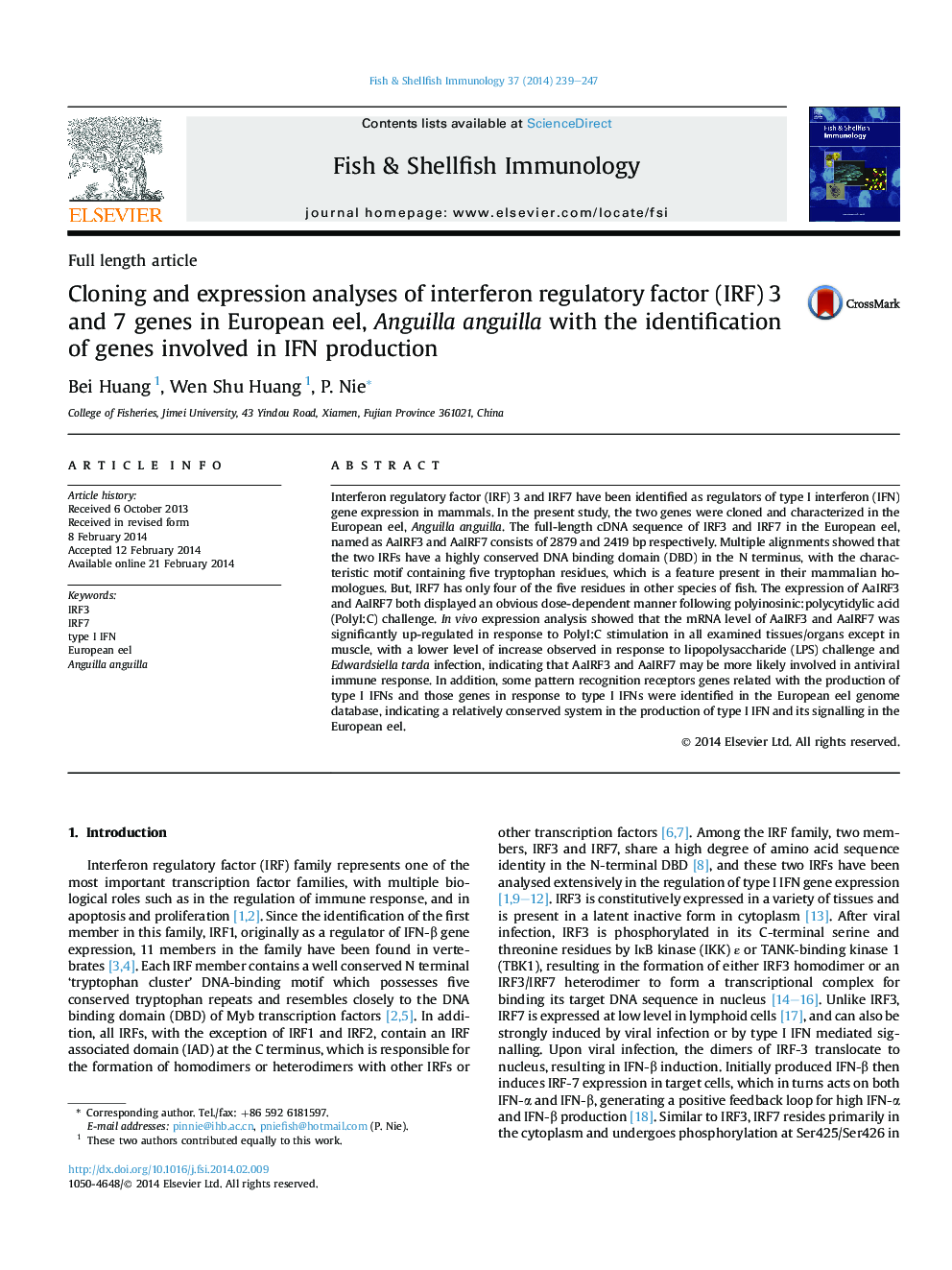| Article ID | Journal | Published Year | Pages | File Type |
|---|---|---|---|---|
| 10972022 | Fish & Shellfish Immunology | 2014 | 9 Pages |
Abstract
Interferon regulatory factor (IRF) 3 and IRF7 have been identified as regulators of type I interferon (IFN) gene expression in mammals. In the present study, the two genes were cloned and characterized in the European eel, Anguilla anguilla. The full-length cDNA sequence of IRF3 and IRF7 in the European eel, named as AaIRF3 and AaIRF7 consists of 2879 and 2419 bp respectively. Multiple alignments showed that the two IRFs have a highly conserved DNA binding domain (DBD) in the N terminus, with the characteristic motif containing five tryptophan residues, which is a feature present in their mammalian homologues. But, IRF7 has only four of the five residues in other species of fish. The expression of AaIRF3 and AaIRF7 both displayed an obvious dose-dependent manner following polyinosinic:polycytidylic acid (PolyI:C) challenge. In vivo expression analysis showed that the mRNA level of AaIRF3 and AaIRF7 was significantly up-regulated in response to PolyI:C stimulation in all examined tissues/organs except in muscle, with a lower level of increase observed in response to lipopolysaccharide (LPS) challenge and Edwardsiella tarda infection, indicating that AaIRF3 and AaIRF7 may be more likely involved in antiviral immune response. In addition, some pattern recognition receptors genes related with the production of type I IFNs and those genes in response to type I IFNs were identified in the European eel genome database, indicating a relatively conserved system in the production of type I IFN and its signalling in the European eel.
Related Topics
Life Sciences
Agricultural and Biological Sciences
Aquatic Science
Authors
Bei Huang, Wen Shu Huang, P. Nie,
